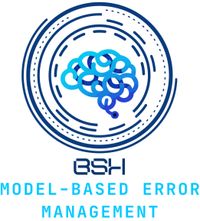Cyberattacks on Europe’s Airports — And What They Teach Us About Humans and Machines
In September 2025, several major European airports—including Berlin Brandenburg (BER), London Heathrow, and Brussels Zaventem—were hit by large-scale cyberattacks. Within hours, key digital systems at numerous check-in counters collapsed. Boarding systems failed, passengers had to be processed manually, and hundreds of flights were delayed or cancelled.
The root cause: a targeted attack on the IT infrastructure of a third-party provider whose software is deeply integrated into airport systems across Europe.
But the real lesson lies deeper—in the human–technology interface.
What the Incident Reveals
Even the most sophisticated firewalls and Security Operations Centers have limits when human factors enter the equation:
- misconfigurations,
- delayed responses to alerts,
- unclear responsibilities,
- or improvised workarounds under pressure.
Each of these can amplify the impact of an attack dramatically.
This is where a concept that will shape the next era of cybersecurity comes into play: AI-based Human Error Management (HEM).
What Is AI-Based Human Error Management?
HEM uses artificial intelligence to anticipate, prevent, and intercept human errors before they cause damage.
It combines machine learning, process monitoring, and adaptive support systems to:
- detect risky behavior early (e.g., faulty configurations, unusual API calls),
- deliver real-time support or “just-in-time nudging,”
- trigger automated fallback processes when systems fail,
- and enable targeted learning after an incident.
In short: HEM transforms the human factor from a vulnerability into one of the strongest elements of the security chain.
What Airports and Organizations Should Do Now
1. Actively manage third-party risks
— binding security SLAs, telemetry visibility, continuous auditing.
2. Pilot AI-enabled error-management systems
— especially in environments where human decisions are mission-critical.
3. Automate and rehearse fallback scenarios
— eliminate ad-hoc crisis responses.
4. Treat errors as learning signals
— not as reasons to assign blame, but as patterns to understand and fix.
The Lesson From September 2025
Resilience is not determined by technology alone.
It depends on the interplay of people, processes, and AI. And when systems fail and every second counts, a well-designed Human Error Management framework can make all the difference.
